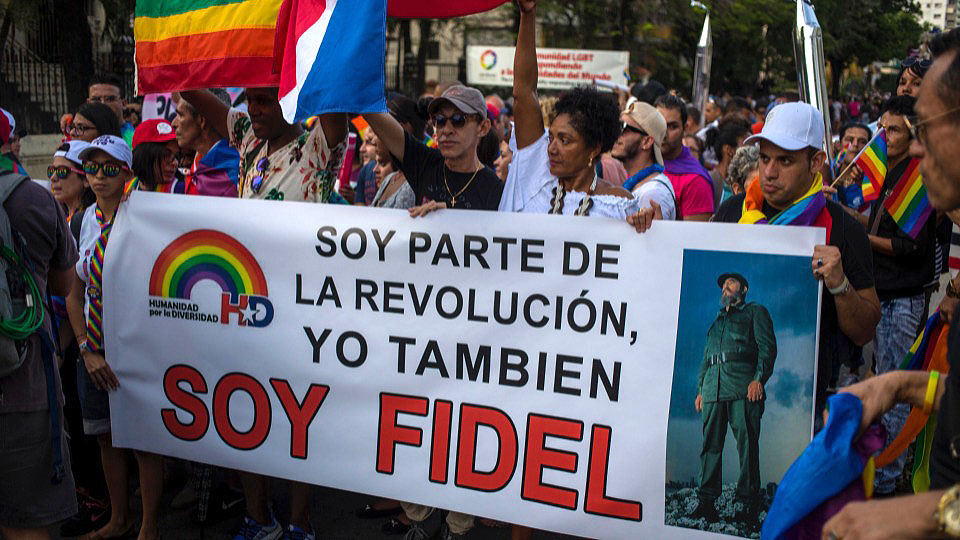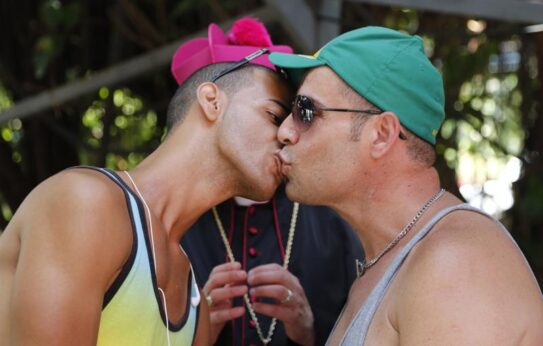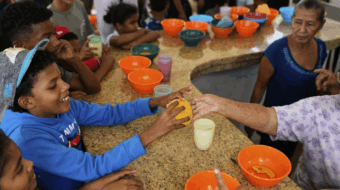
Equality was a big winner in Cuba Wednesday when a new draft of the country’s family code was released that proposes allowing same-sex couples the right to marry and adopt children.
That change is one among many in a 480-article document being put forward for consideration by Cuba’s legislature and eventually the whole people. It would replace a 1975 family code that Cuban legal experts and sociologists say is now out-of-date because family structures and society have changed.
Article 61 of the preliminary draft of the updated family code defines marriage as a “union of two people with legal aptitude who voluntarily agree to enter into it in order to build a life together based on affection and love.” The 1975 code had defined it as “the voluntarily established union between a man and a woman.”
The drafting of a new family code is required by Cuba’s adoption of a new constitution in 2019. That document enshrined one of the most expansive discrimination protection articles of any constitution in the world. It declared, in its Article 42:
“All people are equal before the law, receive the same protection and treatment from the authorities, and enjoy the same rights, liberties, and opportunities, without any discrimination for reasons of sex, gender, sexual orientation, gender identity, age, ethnic origin, skin color, religious belief, disability, national or territorial origin, or any other personal condition or circumstance that implies a distinction injurious to human dignity.”
The inequality of marriage rights is just one aspect of the old family code that is now invalidated by the new constitution. Another is the unequal age of consent to enter into a marriage for men and women; the 1975 code allowed for the possibility of women to marry at 14 and men at 16. That will change in the replacement code.
If the new family code becomes law, it will mark a milestone achievement for the LGBTQ community in Cuba—not just for the marriage rights it will extend to couples who want them, but also because it symbolizes how far the Cuban Revolution has come in its treatment and inclusion of LGBTQ Cubans.
Long before the socialist government came to power, homophobia and heterosexism were widespread in Cuba—as in most societies. They, unfortunately, carried over into revolutionary Cuba.
“The social pathological character of homosexual deviations” was targeted for elimination by the first National Congress on Education and Culture in 1971. The meeting, attended by Fidel Castro, declared that “all manifestations of homosexual deviations are to be firmly rejected and prevented from spreading.” Government workers found themselves unemployed if they were discovered to be homosexual, gay artists faced censorship, and many more were imprisoned for homosexual sex acts.
For a three-year period (1965-68), gay men were arrested and sent to labor camps that went by the name UMAP, or Military Units to Aid Production. Designed as alternatives to military conscription for those who were conscientious objectors or found unfit for other reasons, the UMAPs became de facto prisons for Cuba’s gay population.
The camps were only closed after Fidel himself supposedly went undercover along with members of the Union of Young Communists (UJC) to investigate the treatment experienced by internees.
Even with the shuttering of the camps, homosexuality remained legally forbidden. A slow thaw began in 1975 though, when the Supreme Court of Cuba ruled workplace discrimination against gays would no longer be allowed. Decriminalization (but not legalization) of same-sex relations followed shortly after in 1979.
The Mariel Boatlift of 1980, however, was another dark spot on the treatment of gays. Many homosexuals were among the small number of so-called “deviants” cast off that year. The latter part of the decade was a time of creeping advances in the cultural field, with the gradual appearance of literature and other materials referencing gay subject matter. In 1988, the last explicitly anti-gay law, the 1930 Public Ostentation Act, was repealed.
In 1992, the UJC passed a resolution condemning discrimination on the basis of sexuality, and Fidel announced he did not consider homosexuality to be “a phenomenon of degeneration,” and declared his absolute opposition to “any form of repression, contempt, scorn, or discrimination with regard to homosexuals.” It was quite a turnaround from his 1965 declaration that no homosexual could ever embody “the conditions and requirements of a true Revolutionary, a true Communist militant.”
The following year, public education campaigns against homophobia were conducted for the first time.
The shift from abolishing anti-gay laws and combatting homophobia to attempting the enactment of LGBTQ protections and rights into the legal code happened in the 2000s. A law on civil unions was first proposed in the National Assembly in 2007, promoted by Mariela Castro—head of the National Center for Sex Education (CENESEX) and the daughter of former president Raúl Castro and niece of Fidel.
The legislation never received a vote at the time, but Mariela Castro continued to propose it year after year, with the backing of the Federation of Cuban Women and the Union of Cuban Jurists. People’s World reported that she told a San Francisco audience in 2012, “We first proposed marriage, but legal scholars, and some Communist Party members, were up in arms. So as not to lose the fight, we proposed equal recognition of same-sex couples.”
The 2019 constitution nearly made marriage equality a reality; its first draft had included language saying marriage was a union of “two people…with absolutely equal rights and obligations.” After intense opposition from the Catholic Church and Evangelical Christian groups, the clause was removed, and the task of defining marriages was left to a new family code to supplement the constitution.

The anti-discriminatory Article 42 of the constitution implied directly that the family code would have to recognize same-sex marriage as a right, however, which the draft released Wednesday explicitly does.
“We consider this version [of the family code] to be consistent with the constitutional text, and it develops and updates the various legal-family institutions in correspondence with the humanistic nature of our social process,” Cuban Justice Minister Óscar Silveira Martínez said when announcing the draft.
Yamila González Ferrer, vice president of the Union of Cuban Jurists, who appeared with the justice minister, emphasized that the proposed code goes far beyond just authorizing same-sex marriage.
“It protects all expressions of family diversity and the right of each person to establish a family in coherence with the constitutional principles of plurality, inclusion, and human dignity,” she said.
The preliminary draft is now open for public discussion. The National Assembly is expected to take it up in December and will debate and vote on it. Following the legislature’s approval of a final version, the family code will go to a referendum of the whole Cuban people, likely in 2022.
RELATED STORIES:
Cuba’s new constitution endorses marriage equality, reworks socialist vision
New Cuban Families Code a chance to advance gender and LGBTQ equality










